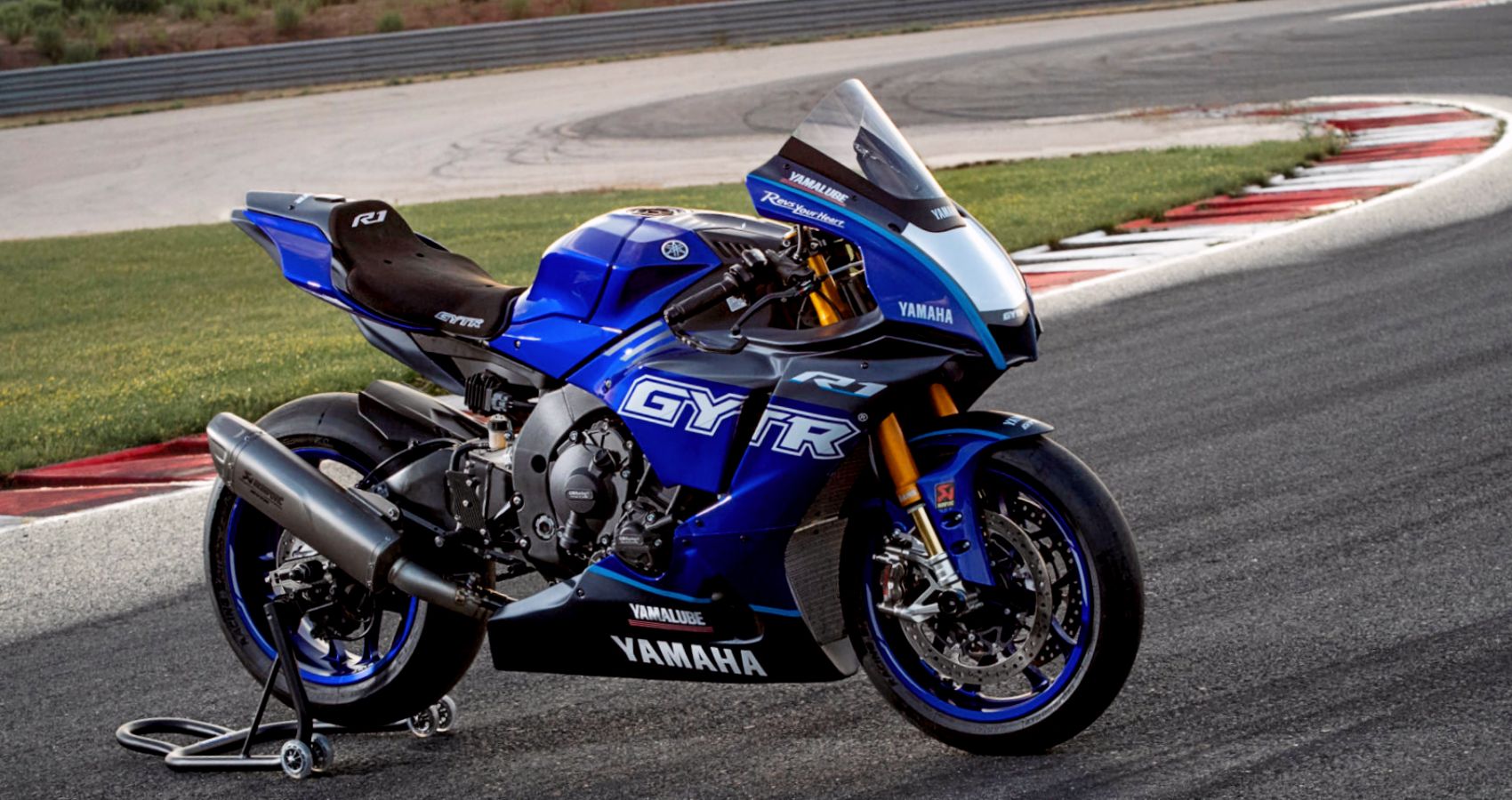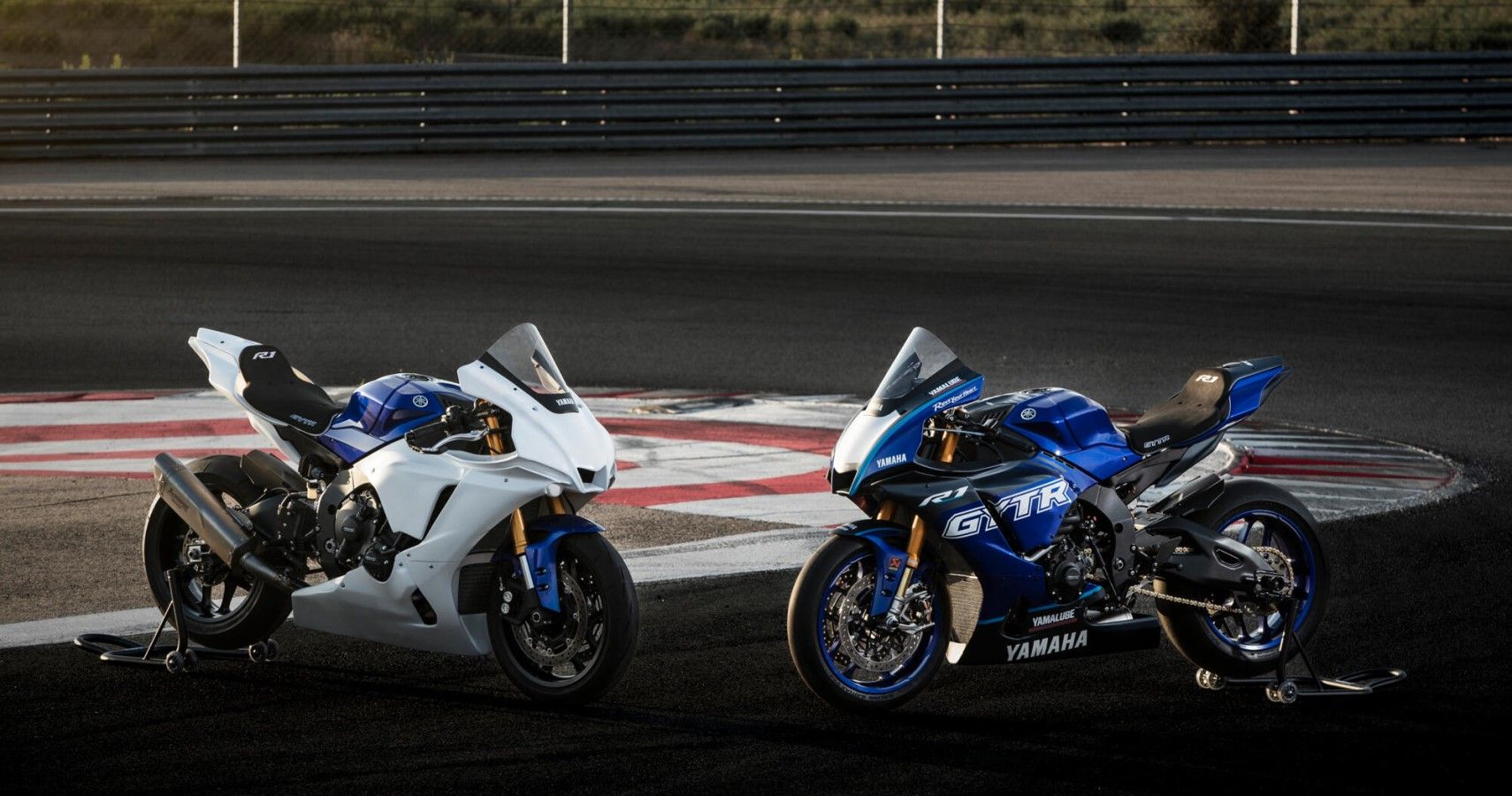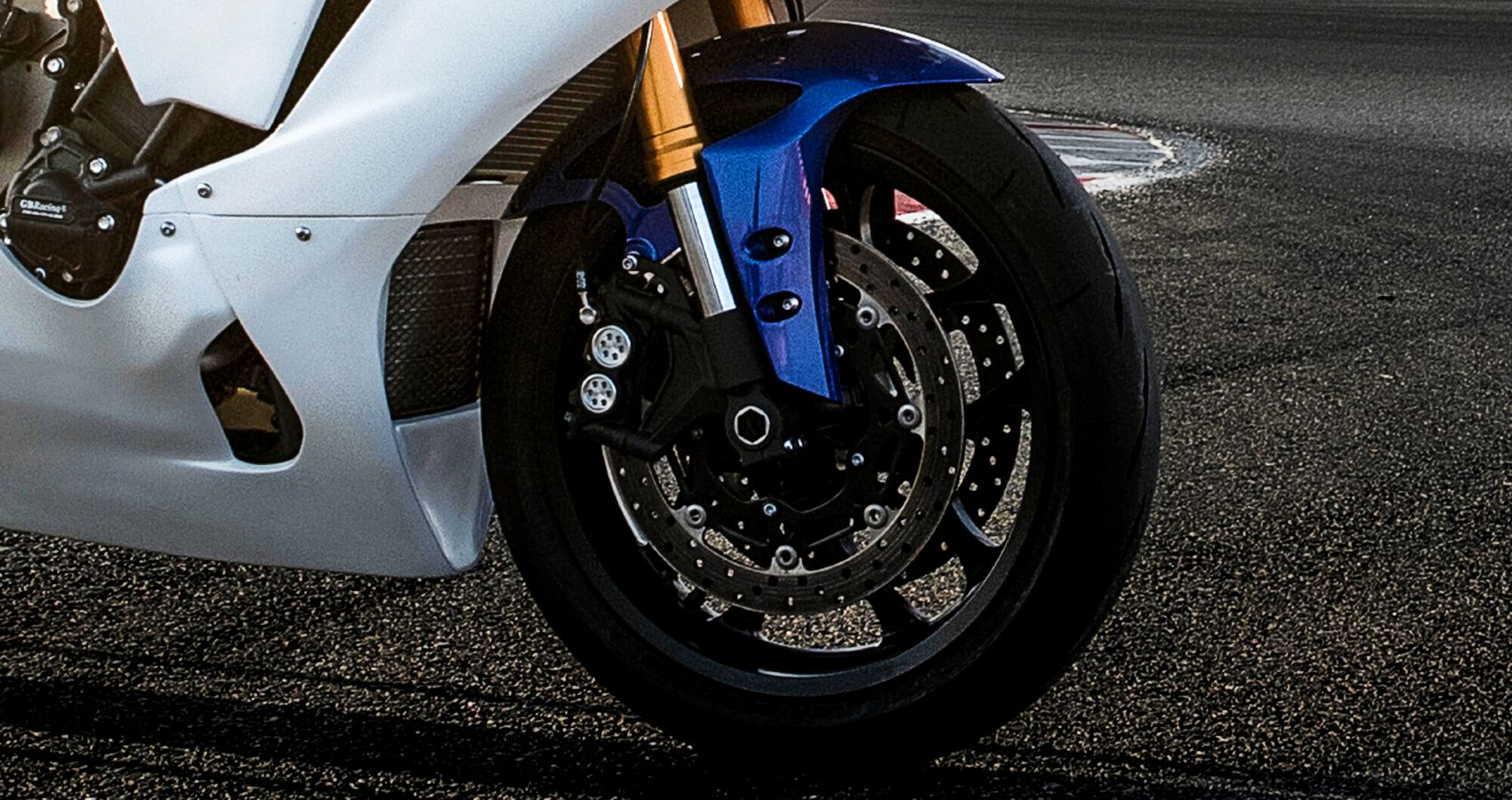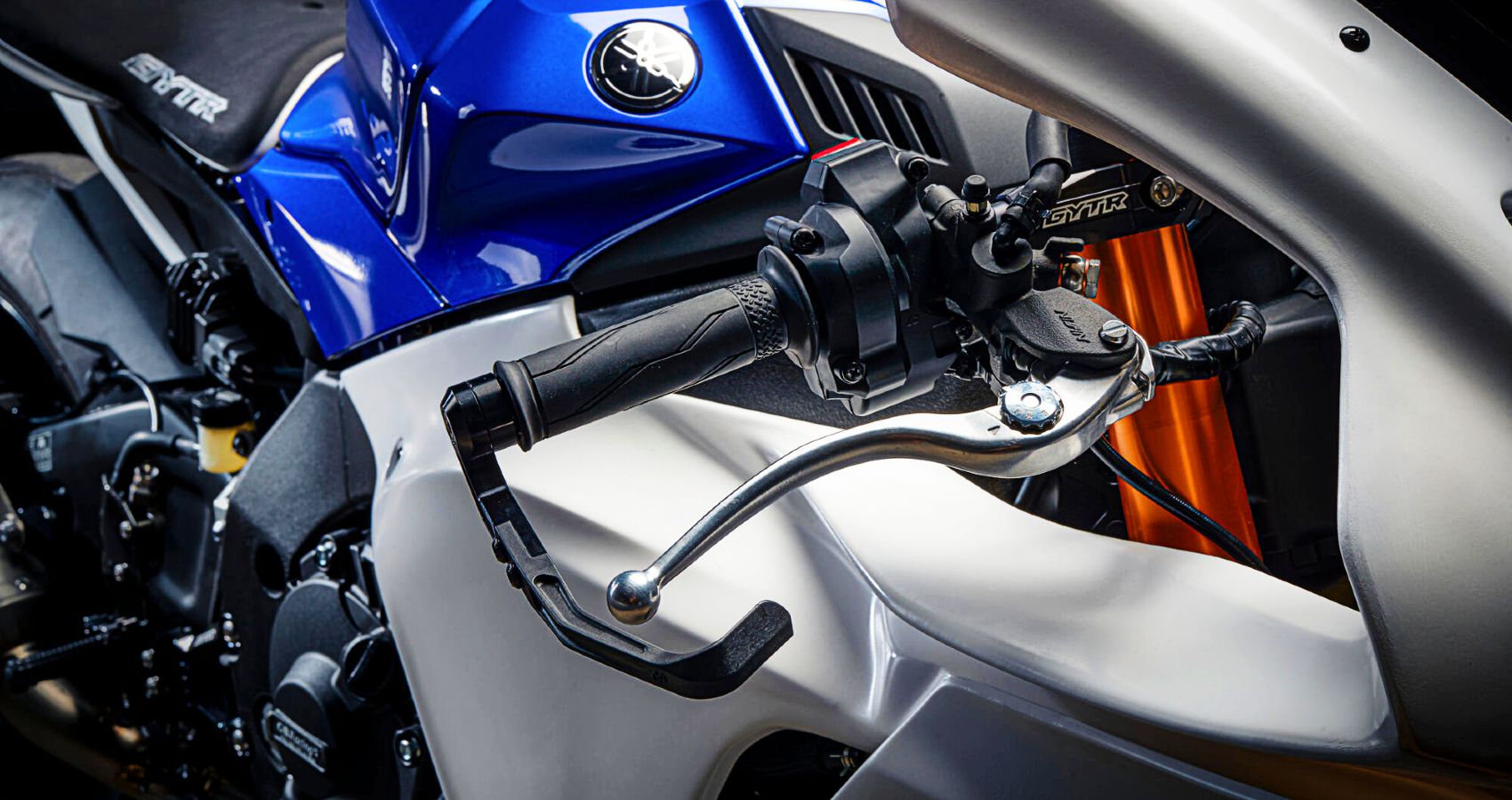First unveiled in 1998, the R1 is the most important product for Yamaha, and it has been an easy choice for folks looking for a track weapon. From reigning in the WorldSBK and racing championships all over the world, the R1 is one revolutionary superbike and one of the meanest, boldest, and most capable bikes in the market.
However, things haven’t been easy for Yamaha. Yamaha had to remove the mighty YZF-R6 from their lineup in 2020 due to the latest European emission rules. Last year, Yamaha, however, relaunched the R6 GYTR exclusively for track purposes.
With the R6 GYTR making a good living for itself among bike enthusiasts and racers, Yamaha has recently introduced the R1 GYTR in Europe, a track-focused version of the R1. The 2023 R1 GYTR is exclusively built for tracks and comes with 25 different racing enhancements, which include a racing IMU, an Akrapovič racing exhaust, and various other features.
As for now, Yamaha hasn’t released the official pricing of the 2023 R1 GYTR, but we expect its pricing to be in the ballpark of €25,000–€30,000 ($25,000–$30,000). So what makes the 2023 Yamaha R1 GYTR better than the regular R1 and R1 M on tracks? Let’s find out.
The Yamaha R1 GYTR Is Built To Dominate The Tracks
The R1 GYTR features the new 998 cc straight-four, four-stroke liquid-cooled Crossplane engine taken from the MotoGP winning M1 race bike. This unit is mated to a 6-speed gearbox and has a compression ratio of 13.0:1 and is capable of producing 197 horsepower at 13,500 rpm and 83 lb-ft (112.4 nm) of torque at 11,500 rpm.
The 2023 R1 GYTR is the first bike to use titanium connecting rods, which are 60% lighter than steel rods. This makes the engine lighter and helps it offer better performance in higher ranges. Yamaha's engineers have also used lightweight magnesium engine covers and aluminum fasteners to further reduce the overall weight of the bike to deliver a quicker response and better handling on tracks.
The 6-speed gearbox comes with shorter gear ratios to achieve shorter throws and deliver slick gear shifts on track. In addition, the transmission box is built with lighter and smaller materials to reduce the overall weight and size of the gearbox to maintain proper weight distribution.
The rear of the R1 GYTR features a GYTR Akrapovic titanium exhaust system built with lightweight titanium and equipped with a compact muffler to offer a mean exhaust note and improve overall engine performance.
The Yamaha R1 GYTR Delivers Agile Riding Dynamics
Yamaha has built the R1 GYTR on a specially designed Deltabox frame to underpin the bike. This frame is mainly built with high-grade aluminum and further strengthened with magnesium subframes for extra strength. Yamaha has designed the Deltabox frame to be light and improve stability while taking corners. It allows the engine to be stressed more to achieve the correct overall weight distribution and offer optimal acceleration.
Furthermore, a set of fully adjustable Öhlins FGR400 KYB USD forks acts as a bridge between the chassis and the wheels. The front suspensions are built with 1.7-inch inner tubes and a 4.7-inch stroke to provide full adjustability and excellent front wheel stability at high speeds. The rear suspensions offer various dynamic adjustments to deliver exceptional handling characteristics on track and optimize the engine torque on the asphalt to offer a better grip.
Below, the R1 GYTR comes outfitted with 10-spoke cast magnesium wheels, which have lower rotational mass than regular aluminum wheels. For exceptional stopping power and efficient braking performance, the wheels are equipped with a set of high-performance Brembo disc brakes with Z04 brake pads.
The front wheels are equipped with two 12.5-inch ventilated discs, while the rear wheels are outfitted with an 8.6-inch disc brake. The brakes come with GYTR-specific additions like GYTR Pro brake lines, air ducts for brake caliper cooling, GYTR Pro wheel adapters, and brake level protectors to deliver a robust braking performance.
Yamaha Stuffed R1 GYTR Has A Roster Of Performance Features
Yamaha has equipped the bike with a heavy dose of performance upgrades to make the most of it. The powertrain is coupled with Yamaha’s Inertial Measurement Unit (IMU) to deliver MotoGP-level maneuverability. The IMU offers a six-axis monitoring ability with a gyroscopic sensor and acceleration monitor working at a rate of 125 calculations per second to offer dynamic ride settings.
This bike also features the Yamaha Ride Control function that includes Power Mode, Traction, Slide, Launch and Lift Control systems and comes equipped with a quick shift and rev-matching function.
In addition, the engine is joined to a GYTR Pro Clutch feature consisting of quick shifters and a ride-by-wire throttle system to deliver slick gear changes and faster acceleration. Besides this, the PWR mode offers the rider four different modes to adjust the power and handling characteristics according to the situation.
The rider is offered an R1-specific full digital color TFT cluster, and it displays all the information the ride needs on track. The cluster shows brake pressure, fore-aft G-force information, lap timer, gear, speed, and various other data. In addition, the system provides Wi-Fi, GPS, Android, and Apple device support to let the rider stay connected on the go.
With all these features equipped, the 2023 Yamaha R1 GYTR is one of the most capable track weapons available on the market. It has the looks, power, driving dynamics, and a slew of performance upgrades to help you perform well on the track without breaking a sweat.
Source: Yamaha Europe


.jpg)
.jpg)


.jpg)

.jpg)

.jpg)